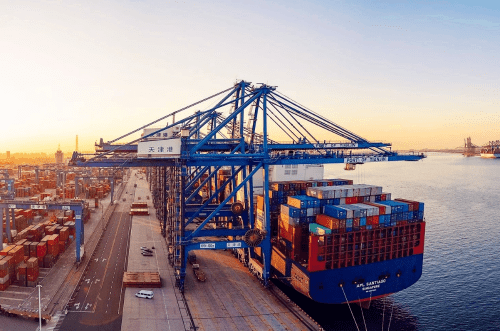Tianjin Port Group and Huawei, a China-based provider of information and communications technology (ICT) infrastructure, will expand their collaboration to create a digital twin of the Chinese port.
Yang Jiemin, vice president of Tianjin Port Group, explained that the digital twin of the port will include the construction of new automated terminals, the updating of existing terminals, and the digital transformation of the port.
The Section C Terminal at the Port of Tianjin’s Beijiang Port Area was the world’s first smart, zero-carbon port terminal. It began large-scale commercial operations in October 2021 and had been running steadily since then. This terminal uses 5G and L4 autonomous driving technology to make it safer and more efficient.
Yue Kun, chief technology officer of Huawei’s Smart Road, Waterway & Port BU, noted that planned upgrades of the terminal will assist a variety of sectors by combining next-generation digital technologies such as 5G and Artificial Intelligence (AI) to address industrial challenges, support digital industry transformation and upgrading, and provide social value.
The Port of Tianjin is a big modern port with 300,000-ton-class terminals and a channel depth of 22 meters. It contains 213 different types of berths. In 2022, the Chinese port handled over 21 million TEUs, taking place among the 10 busiest ports in the world.
At the terminal, container cranes operate automatically and intelligent robots of the horizontal transportation system frequently come and go. Additionally, remotely controlled quay cranes lift loaded containers from cargo ships and put them onto the intelligent robots for horizontal transportation.
Supported by the BeiDou Navigation Satellite System, these robots are guided to automatic locking/unlocking stations to unlock containers and then to the container yard along optimal driving routes that are calculated in real-time.
Yang Jiemin described how the new solution, which integrates 5G and L4 autonomous driving technology, was put into large-scale commercial deployment for the first time in a public scenario at the Section C Terminal. This has created a new model for updating and altering traditional container ports across the world, according to Jiemin.







